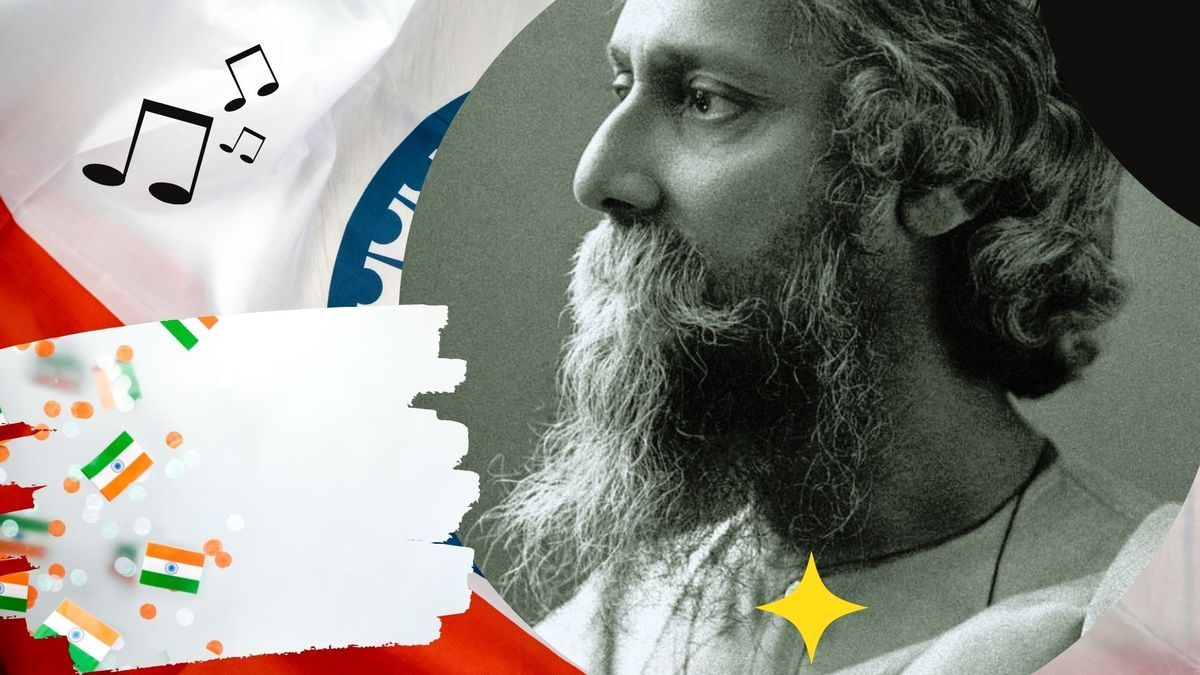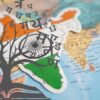It only needs a couple of notes from the music to trigger goosebumps and invoke a sense of pride, while an Indian stands up for the 52 seconds of ‘Jana Gana Mana’, the national anthem of India. Most people know that it was the polymath Rabindranath Tagore who authored the poem in 1911. But, not many know that it was translated into English as ‘Morning Song of India’ and given a tune on February 28, 1919, during Tagore’s brief stay at Madanapalle.
Oblivious to many Indians, Madanapalle, a sleepy and serene town in the Chittoor district of the Rayalaseema region, enjoys the rare distinction of contributing some of the firsts to the Indian national movement.
Then just an ordinary town, Madanapalle got an everlasting place in history as Tagore chose to stay with Irish poet James H. Cousins, then principal of Besant Theosophical College. Till then, ‘Jana Gana Mana’ was just a lyric.
It became a song after the principal’s wife Margaret Cousins gave it a tune. She had worked hard to analyze the meaning of each line and composed the musical notes, which Tagore had then happily approved.
Interestingly it was not the national anthem for the independence day celebration before 1950. On January 24, 1950, just two days before India became a republic, then Prime Minister Jawaharlal Nehru had asked musician Herbert Murrill to give his views on the tune.
Murrill who was an English musician, composer, and organist had felt it was a bit slow. He had then increased the tempo and molded it on the lines of the French national song La Marseilles,”.
Original document sold
In an interview with The Hindu, Prof. Seshan, who has settled in Madanapalle after his retirement, remembers how the college campus remains a witness to those exciting moments.
“The original document on which Jana Gana Mana was written was conserved at the college for several years, before it was sold to an American art collector for a fabulous, but the undisclosed price. It was required after the withdrawal of grants by the Government of Madras, which took offense to the faculty and students participating in the Home Rule Movement led by Annie Besant,” says Prof. Seshan.
However, a photocopy was made before the original document left the country forever.
Jana Gana Mana controversy that it calls the king as ‘Bharata Bhagya Vidhata’
Prof. Seshan brushes aside the recent controversy that erupted on social media platforms that Tagore had written the national anthem in honor of King George V.
“When Tagore had rendered ‘Jana Gana Mana’ for the first time, it was at the same convention that the Indian National Congress had felicitated the king. Though it was widely surmised that Tagore had mentioned the king as ‘Bharata Bhagya Vidhata’ (dispenser of India’s destiny), he did not bother to scotch the rumors which continue even till today,” says Prof. Seshan.
It was sung on the second day of the convention. The event was reported thus in the British Indian press:
“The Bengali poet Rabindranath Tagore sang a song composed by him specially to welcome the Emperor.” (Statesman, 28 December 1911)
The proceedings began with the singing by Rabindranath Tagore of a song specially composed by him in honor of the Emperor.”
(Englishman, 28 December 1911)
(Indian, 29 December 1911)
“When the proceedings of the Indian National Congress began on Wednesday 27 December 1911, a Bengali song in welcome of the Emperor was sung. A resolution welcoming the Emperor and Empress was also adopted unanimously.”
Many historians are of the opinion that the newspaper reports cited above were confused. The confusion arose in the British Indian press since a different song, “Badshah Humara” written in Hindi by Rambhuj Chaudhary, was sung on the same occasion in praise of the monarch. The nationalist Indian press stated this difference of events clearly.



